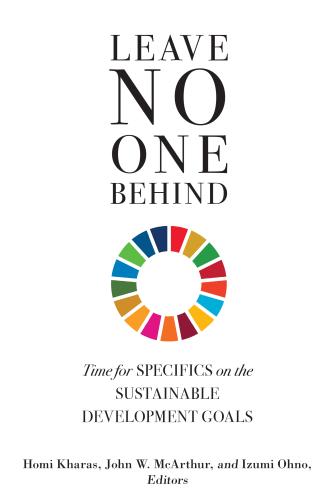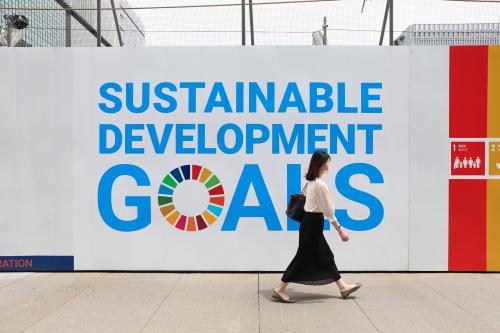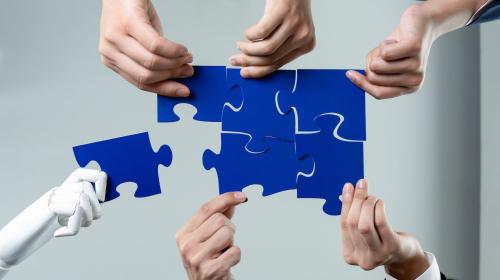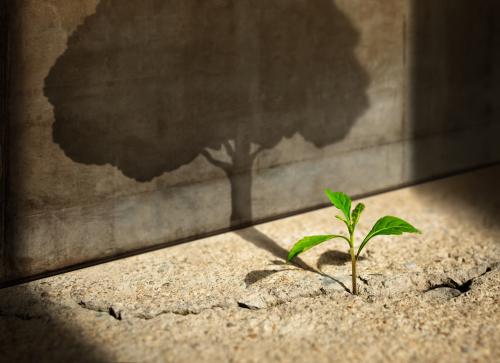In 2015, 193 nations signed on to Agenda 2030 setting forth the Sustainable Development Goals (SDGs). The predecessor Millennium Development Goals (MDGs) were a narrower set of eight objectives targeted specifically at enhancing economic and social progress in lower- and middle-income countries—with first-order implications for focusing donor development assistance. In contrast, the 17 SDGs are universal—they cover a broader scope of economic, social, environmental, and political elements of development. They are designed for all countries of the world—in recognition that “sustainable development” is an ongoing process in all countries, no matter their level of economic development.
In a new report, I review how 20 of the largest donor countries encompass the SDGs in their international development cooperation policies and programs. They have all committed to the SDGs. All, except for the United States, have in various ways built them into policies guiding their own development and their international development programs. Referencing publications and web pages, the report captures how each country proposes or reports incorporating the SDGs at three levels—strategy/policy, programs, and reporting on outputs and results for their investments in international development. All countries surveyed, except the U.S., have produced at least one Voluntary National Review (VNR), the formal mechanism for countries to share their progress. Although principally aimed at reporting on national progress on the SDGs, some VNRs also cover international development cooperation.
‘Sustainable development’ is an ongoing process in all countries, no matter their level of economic development.
This stocktaking is based on how each country presents its engagement with the SDGs and does not assess the extent to which those policies and plans are translated into practice. There is no single common way donors incorporate the SDGs in their international development policies and programs. Efforts range from expression of support at a very general level to embedding the global goals in policies and strategies or building strategies around the goals. Some countries address commitments to the SDGs in a comprehensive manner with a single strategy covering both domestic activities and development cooperation, although distinguishing separate priorities for each. At the program level, a few donors tie each program, and even budget levels, to the relevant goals but many use the SDGs only as a general reference point. A few donors report against the SDGs. In actuality, country action can range from grand policy pronouncements that are little more than “SDG-washing” to pragmatically designing programs around specific SDGs, reporting results against SDGs, and independently auditing implementation.
Some incorporate reporting on their international work in their VNRs, others restrict the VNR just to their national SDG program. Some use Agenda 2030 as the principal frame for their international development work, others embed the SDGs, or particular goals, in their international policies and programs.
Some approaches are unique to one or a few countries. Canada incorporates the SDGs in its Feminist International Assistance Policy. Denmark sorts countries into one of three categories and links each category to specific SDGs. Several donors have websites that report programs and results for each SDG, and several connect their development finance to the SDGs. Finland connects theories of change to specific SDGs. Some countries engage in public consultations in setting their SDG commitments. Several countries have outreach programs to educate their populace on development cooperation and the SDGs. Japan has posted videos that explain its international engagement on the SDGs. Spain has a policy of undertaking an SDG analysis of the global impact of proposed legislative initiatives.
Some countries, including Germany, Finland, New Zealand, Sweden, and Australia, evidence high-level political ownership of the SDGs in establishing a central government mechanism for policy coherence on Agenda 2030. Several countries follow the SDG principle of “leave no one behind” and employ some or all of the “five Ps”—People, Planet, Prosperity, Peace, and Partnership.
As Agenda 2030 is the international development currency of this decade, incorporating the SDGs in U.S. development cooperation policy would be an important step in the Biden-Harris administration commitment to reengage the U.S. with the world community.
For the most part, the MDGs lived in the realm of internationalists, specifically with practitioners of international development, international organizations, and international NGOs. The SDGs, in contrast, are truly universal, not just in scope but also in application. Their use extends from the international, to the national, to the local. By 2020, 168 countries had written VNRs, with another 43 VNRs expected in 2021.
While the U.S. government has not issued a national VNR, New York pioneered the Voluntary Local Review (VLR), an innovation based on the VNR where local governments assess their progress on the SDGs. Several other American cities have also completed VLRs, including Los Angeles and Pittsburgh; and Hawaii completed the first-ever statewide VLR. New York has since signed up more than 300 cities worldwide to do the same, and universities have adopted a unique SDG framework to assess their contribution to economic, social, and environmental progress. As of 2018, 78 percent of S&P 500 companies had issued recent sustainability reports, many of which make reference to specific SDGs.
The SDGs have become so ubiquitous that they serve as a common language. Reference SDG 5, and many people know you are talking about gender equality. For an individual looking to make a responsible investment or a government looking to attract responsible corporate actors, if a corporation has a commitment—better yet a specific target—on SDG 8 on decent work and growth or SDG 7 on affordable and clean energy, it might well be worth a look.
The catalyst for this report is the opportunity for the Biden administration to incorporate the SDGs in its development strategies and programs. While the U.S. was an active partner in the development and initial commitment to the SDGs, over the past four years U.S. development policies have referenced the SDGs but not embraced them. Candidate Biden committed to the SDGs, and the administration reportedly is deliberating on how it might incorporate the SDGs in its development cooperation.
As Agenda 2030 is the international development currency of this decade, incorporating the SDGs in U.S. development cooperation policy would be an important step in the Biden-Harris administration commitment to reengage the U.S. with the world community. More specifically, it would align U.S. development policies and agencies—in particular, the United States Agency for International Development (USAID), Millennium Challenge Corporation (MCC), Development Finance Corporation (DFC), U.S. Trade and Development Agency (USTDA), and U.S. Department of Agriculture (USDA)—with their donor counterparts and partner-country national strategies. It would facilitate U.S. development agencies in setting common goals and targets with other development actors, and it would provide benchmarks for tracking and measuring the results of U.S. development cooperation.
Knowing how other donors have done so should be a useful guide for how the U.S. might best do likewise.
The Brookings Institution is committed to quality, independence, and impact.
We are supported by a diverse array of funders. In line with our values and policies, each Brookings publication represents the sole views of its author(s).









Commentary
How government donors engage with the Sustainable Development Goals
July 29, 2021